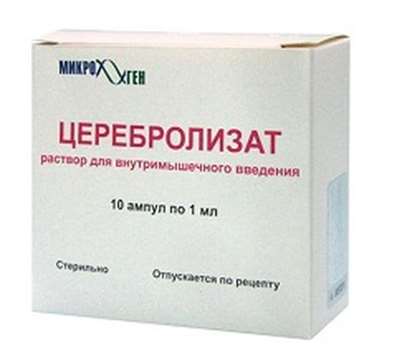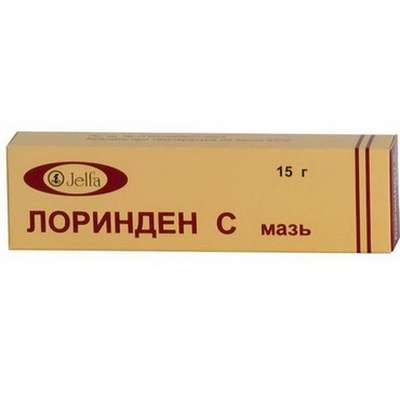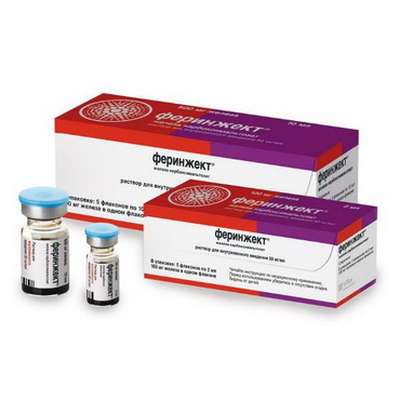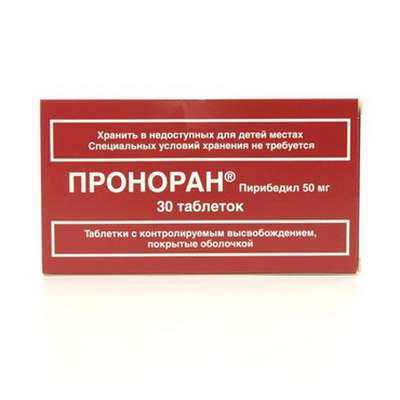Instruction for use: Infliximab
I want this, give me price
Trade name of the drug – Remicade, Flammegis
The Latin name of the substance Infliximab
Infliximabum (genus. Infliximabi)
Gross formula
C6428H9912N1694O1987S46
Pharmacological group:
Immunosuppressive drugs
The nosological classification (ICD-10)
K50 Crohn's disease [regional enteritis]: Crohn's disease; Crohn's disease with fistula; Granuloma of the intestine; Granulomatous enteritis; Crohn's disease; Regional ileitis; Terminal Ileitis; Enteritis regional
K51 Ulcerative colitis: Colitis acute ulcerative; Colitis ulcerative; Ulcerative-necrotic colitis; Colitis ulcerative-hemorrhagic nonspecific; Colitis ulcerative and trophic; Colitis ulcerative idiopathic; Colitis ulcerative nonspecific; Nonspecific ulcerative colitis; Proctocolitis ulcers; Hemorrhagic purulent rectoxitis; Rectoccolitis ulcerative-hemorrhagic
L40 Psoriasis: Chronic plaque psoriasis with diffuse; generalized psoriasis; Psoriasis of the scalp; hairy parts of the skin; A generalized form of psoriasis; Psoriazoformny dermatitis; Psoriasis complicated with erythroderma; disabling psoriasis; Isolated psoriatic plaque; Eksfolliativny psoriasis; psoriatic erythroderma; Psoriasis with eczematization; Hyperkeratosis in psoriasis; Inverse psoriasis; Psoriasis ekzemopodobnye; dermatoses psoriazoformny; Psoriasis genitals; Psoriasis lesions with hairy areas of the skin; erythrodermic psoriasis; Chronic psoriasis of the scalp; Chronic psoriasis; ordinary psoriasis; refractory psoriasis; Koebner phenomenon; psoriasis
M06.9 Rheumatoid arthritis, unspecified: Rheumatoid arthritis; Pain syndrome in rheumatic diseases; Pain in rheumatoid arthritis; Inflammation in rheumatoid arthritis; Degenerative forms of rheumatoid arthritis; Children's rheumatoid arthritis; Exacerbation of rheumatoid arthritis; Acute articular rheumatism; Rheumatic arthritis; Rheumatic polyarthritis; Rheumatoid arthritis; Rheumatic polyarthritis; Rheumatoid arthritis; Rheumatoid arthritis; Rheumatoid arthritis of active course; Rheumatoid periarthritis; Rheumatoid polyarthritis; Acute rheumatoid arthritis; Acute rheumatism
M07.3 Other psoriatic arthropathies (L40.5 +): Psoriatic arthritis; Generalized form of psoriatic arthritis; Psoriatic arthritis
M45 Ankylosing spondylitis: Ankylosing spondylarthrosis; Marie-Strumpel disease; Ankylosing spondylitis; Ankylosing spondylitis; Pain syndrome in acute inflammatory diseases of the musculoskeletal system; Pain syndrome in chronic inflammatory diseases of the musculoskeletal system; Bechterew's disease; Ankylosing spondylitis; Diseases of the spinal column; Rheumatic spondylitis; Bechterew-Marie-Strumpel disease
CAS code
170277-31-3
Characteristics of the substance Infliximab
Chimeric mouse-human IgG1 monoclonal antibodies consisting of a variable (Fv) region of high affinity neutralizing mouse monoclonal antibodies to tumor necrosis factor-alpha and a fragment of the human IgGl molecule.
Pharmacology
Mode action - immunosuppressive.
Has a high affinity for the tumor necrosis factor-alpha (TNF-alpha), forms a stable complex with both soluble and membrane-associated forms of human TNF-alpha, reducing its functional activity. Reduces the concentration (binds and inhibits the synthesis) of interleukin-1 (IL-1), interleukin-6 (IL-6), interleukin-8 (IL-8), monocyte chemoattractant protein-1, nitric oxide, metalloproteinases (collagenase, stromelysin) , And other inducers of inflammation and tissue destruction, as well as the level of soluble forms of adhesion molecules - ICAM-1 and E-selectin, reflecting the activation of the vascular endothelium.
Eliminates from the body for 6 months.
Application of the substance Infliximab
Rheumatoid arthritis (active form) with ineffectiveness of previous therapy with disease-modifying antirheumatic drugs, including methotrexate (combination therapy with methotrexate); Severe progressive active rheumatoid arthritis without previous therapy with methotrexate or other disease-modifying antirheumatic drugs (combination therapy with methotrexate). Crohn's disease (active form) of moderate or severe degree, incl. With the formation of fistula, in adults and children older than 6 years with ineffectiveness, intolerance or the presence of contraindications to standard therapy, including corticosteroids and / or immunosuppressants. Ulcerative colitis with ineffectiveness of previous therapy. Ankylosing spondylitis with severe axial symptoms and laboratory signs of inflammation with ineffective standard therapy. Active progressive psoriatic arthritis. Psoriasis of severe severity if systemic therapy is necessary; Psoriasis of moderate severity with ineffectiveness, intolerance or contraindications to PUVA therapy.
Contraindications
Hypersensitivity (including to other murine proteins), severe infection (including sepsis, abscess, tuberculosis, opportunistic infections), heart failure of moderate or severe degree, children and adolescence under 18 (with Crohn's disease - up to 6 years), pregnancy, breast-feeding.
Update of information
Additional information on contraindications to the use of infliximab
Infliximab in doses exceeding 5 mg / kg is contraindicated in patients with moderate to severe heart failure. Randomized clinical trials of infliximab in patients with moderate to severe heart failure (NYHA grade III / IV) were conducted. The appointment of infliximab in a dose of 10 mg / kg was accompanied by an increase in mortality and an increase in the number of hospitalizations of patients due to decompensation of heart failure.
Restrictions
Oncological diseases in the anamnesis, latent infections (including chronic viral hepatitis), demyelinating diseases of the nervous system.
Pregnancy and breast-feeding
It is not recommended for use in pregnancy, tk. Infliximab may affect the development of the fetal immune system.
The action category for fetus by FDA is B.
At the time of treatment, breastfeeding should be discontinued (it is not known whether infliximab is excreted in breast milk).
Breastfeeding is allowed no earlier than 6 months after the end of treatment.
Women of childbearing age who are undergoing treatment with infliximab and for at least 6 months after it should use reliable methods of contraception.
Side effects of Infliximab
From the nervous system and sensory organs: 1-10% - headache, vertigo, dizziness, fatigue; 0.1-1% - exacerbation of demyelinating disease (including multiple sclerosis), depression, agitation, amnesia, apathy, nervousness, drowsiness, insomnia, confusion, conjunctivitis, keratitis, endophthalmitis, periorbital edema; 0.01-0.1% - meningitis; Frequency unknown - demyelinating disease (Guillain-Barre syndrome, neuropathy, hypoesthesia, paresthesia).
From the cardiovascular system and blood (hematopoiesis, hemostasis): 0.1-1% - exacerbation of heart failure, palpitation, arrhythmia, bradycardia, hot flashes, petechiae, ecchymosis / hematoma, decrease or increase in blood pressure, vasospasm, peripheral tissue ischemia , Thrombophlebitis, syncope, anemia, leuko-, lympho-, neutro-, thrombocytopenia, lymphocytosis, lymphadenopathy; Frequency unknown - agranulocytosis, pancytopenia, hemolytic anemia, idiopathic or thrombotic thrombocytopenic purpura; 0,01-0,1% - tachycardia, peripheral circulatory disturbance; Frequency unknown - heart failure, pericardial effusion.
On the part of the respiratory system: 1-10% - infections of the upper and lower respiratory tract (including bronchitis, pneumonia), sinusitis, dyspnea; 0.1-1% - pulmonary edema, pleurisy, nosebleeds, 0.01-0.1% - pleural effusion; Frequency unknown - interstitial lung diseases, incl. Rapidly progressing (pulmonary fibrosis, pneumonitis).
On the part of the intestine: 1-10% - nausea, diarrhea, dyspepsia, increased activity of liver transaminases; 0,1-1% - diverticulitis, gastroesophageal reflux, constipation, cheilitis, cholecystitis, impaired liver function; 0,01-0,1% - intestinal perforation, gastrointestinal bleeding, intestinal stenosis, hepatitis; Frequency unknown - pancreatitis, hepatic insufficiency, autoimmune hepatitis, hepatocyte damage, jaundice.
From the genitourinary system: 0.1-1% - urinary tract infections (including pyelonephritis), vaginitis, edema.
From the skin: 1-10% - sweating, dry skin; 0.1-1% hyperkeratosis, skin pigmentation disorder, cyanosis, fungal dermatitis (onychomycosis, eczema), seborrhea, rosacea, papilloma of the skin, erysipelas, warts, furunculosis, alopecia, bullous rash, psoriasis, including the first to arise and pustular Palms and feet).
Allergic reactions: 1-10% - rash, itching, urticaria, bronchospasm, reactions by type of serum sickness; 0.1-1% - anaphylactic reactions, lupus-like syndrome; Frequency unknown - anaphylactic shock, serum sickness, vasculitis, toxic epidermal necrolysis, erythema multiforme.
Other: infectious and parasitic diseases: 1-10% - viral infections (including influenza, herpetic infection); 0.1-1% - sepsis, tuberculosis, abscess, bacterial and fungal infections (including candidiasis), cellulitis; Frequency unknown - opportunistic infections (caused by atypical mycobacteria, pneumocystosis, histoplasmosis, coccidioidomycosis, cryptococcosis, aspergillosis, listeriosis), exacerbation of chronic hepatitis B, salmonellosis.
Other side effects: 1-10% - pain syndrome (chest pain, abdominal pain), fever, reactions at the injection site; 0,1-1% - myalgia, arthralgia, back pain, formation of autoantibodies to infliximab, disruption of the regeneration process, chills, infusion reactions; 0,01-0,1% - granulomatous ulcers.
Interaction
In patients with rheumatoid arthritis and Crohn's disease, simultaneous use of methotrexate may reduce the formation of antibodies to infliximab and increase plasma concentrations of plasma. Infusion solution is incompatible (should not be confused) with other drugs.
Overdose
Clinical data on overdose are absent. A single dose of 20 mg / kg was not accompanied by toxic effects.
Routes of administration
IV.
Precautions for the substance Infliximab
Before the start of therapy, it is necessary to cure manifest infections and abscesses. With the development of severe allergic reactions, severe infection or sepsis, the development of lupus-like syndrome treatment should be discontinued. The occurrence of acute allergic reactions necessitates a reduction in the rate of infliximab administration or the cessation of infusion. After elimination or disappearance of the symptoms of the reaction, the administration is resumed at a slower rate. It is recommended the use of antihistamines and paracetamol (for prophylaxis), corticosteroids and adrenaline (for cupping) of allergic reactions. Women of childbearing age during treatment and within 6 months after its termination should use reliable methods of contraception.
Update of information
Additional information on precautionary measures when infliximab is used
In patients who received preparations of monoclonal antibodies to TNFα, in particular infliximab, severe and sometimes fatal bacterial, mycobacterial infections, viral and fungal infestations were observed. Among the opportunistic infections, tuberculosis, histoplasmosis, aspergillosis, candidiasis, coccidiomycosis, listeriosis, pneumocystis infection were most often observed. In patients who took infliximab in combination with immunosuppressants, such as methotrexate, generalized forms of infections were more common.
Avoidance of infliximab should be avoided in patients with active infectious processes of all forms (localized and generalized). Before the appointment of infliximab, it is necessary to compare the benefits of therapy and possible complications in patients belonging to the following at-risk groups:
1. Patients with chronic or recurrent infectious diseases;
2. Patients who have had tuberculosis or who have contact with patients with tuberculosis;
3. Patients who have traveled to endemic areas with a high incidence of mycosis, such as histoplasmosis, coccidiomycosis, blastomycosis, etc .;
4. Patients with other conditions predisposing to infections.

 Cart
Cart





